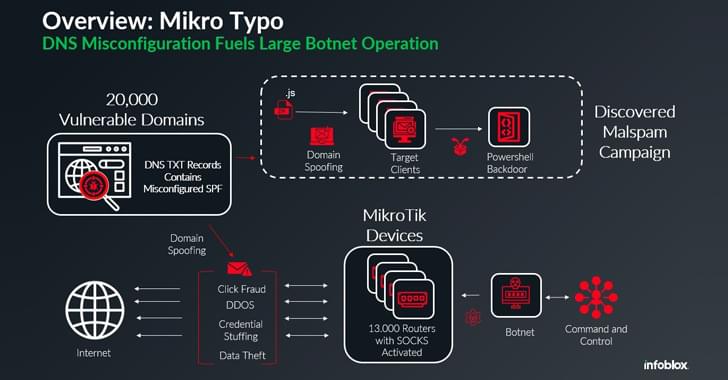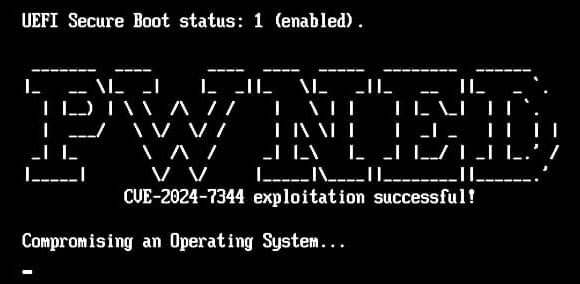A 13,000-router MikroTik botnet bypasses SPF protections on 20,000 domains, fueling malware, DDoS, and phishing.



Threat actors on X are exploiting the news around Ross Ulbricht to direct unsuspecting users to a Telegram channel that tricks them into run PowerShell code that infects them with malware.
The attack, spotted by vx-underground, is a new variant of the “Click-Fix” tactic that has become very popular among threat actors to distribute malware over the past year.
However, instead of being fixes for common errors, this variant pretends to be a captcha or verification system that users must run to join the channel.

The campaign is unique for its focus on the Chinese-speaking demographic and the use of software-related lures to activate the attack chain.
“Equally striking is the attackers’ sophisticated use of legitimate software as a delivery mechanism for malware, seamlessly blending malicious activities with seemingly benign applications,” Fishbein said.
“The adaptability of the PNGPlug loader further elevates the threat, as its modular design allows it to be tailored for multiple campaigns.”
4.2M hosts, including VPNs and routers, face risks from unencrypted tunneling protocols like GRE6 enabling DDoS.

“Code executed in this early boot phase can persist on the system, potentially loading malicious kernel extensions that survive both reboots and OS reinstallation,” the CERT Coordination Center (CERT/CC) said. “Additionally, it may evade detection by OS-based and endpoint detection and response (EDR) security measures.”
Malicious actors could further expand the scope of exploitation by bringing their own copy of the vulnerable “reloader.efi” binary to any UEFI system with the Microsoft third-party UEFI certificate enrolled. However, elevated privileges are required to deploy the vulnerable and malicious files to the EFI system partition: local administrator on Windows and root on Linux.
The Slovakian cybersecurity firm said it responsibly disclosed the findings to the CERT/CC in June 2024, following which Howyar Technologies and their partners addressed the issue in the concerned products. On January 14, 2025, Microsoft revoked the old, vulnerable binaries as part of its Patch Tuesday update.



“By compromising developer accounts, attackers not only exfiltrate intellectual property but also gain access to cryptocurrency wallets, enabling direct financial theft,” the company said. “The targeted theft of private and secret keys could lead to millions in stolen digital assets, furthering the Lazarus Group’s financial goals.”
The malware architecture adopts a modular design and is flexible, and capable of working across Windows, macOS, and Linux operating systems. It also serves to highlight the ever-evolving and adaptable nature of nation-state cyber threats.
“For North Korea, hacking is a revenue generating lifeline,” Sherstobitoff said. “The Lazarus Group has consistently funneled stolen cryptocurrency to fuel the regime’s ambitions, amassing staggering sums. With Web3 and cryptocurrency industries booming, Operation 99 zeroes in on these high-growth sectors.”

Microsoft has shed light on a now-patched security flaw impacting Apple macOS that, if successfully exploited, could have allowed an attacker running as “root” to bypass the operating system’s System Integrity Protection (SIP) and install malicious kernel drivers by loading third-party kernel extensions.
The vulnerability in question is CVE-2024–44243 (CVSS score: 5.5), a medium-severity bug that was addressed by Apple as part of macOS Sequoia 15.2 released last month. The iPhone maker described it as a “configuration issue” that could permit a malicious app to modify protected parts of the file system.
“Bypassing SIP could lead to serious consequences, such as increasing the potential for attackers and malware authors to successfully install rootkits, create persistent malware, bypass Transparency, Consent and Control (TCC), and expand the attack surface for additional techniques and exploits,” Jonathan Bar Or of the Microsoft Threat Intelligence team said.

A new malware campaign has compromised more than 5,000 WordPress sites to create admin accounts, install a malicious plugin, and steal data.
Researchers at webscript security company c/side discovered during an incident response engagement for one of their clients that the malicious activity uses the wp3[.]xyz domain to exfiltrate data but have yet to determine the initial infection vector.
After compromising a target, a malicious script loaded from the wp3[.]xyz domain creates the rogue admin account wpx_admin with credentials available in the code.